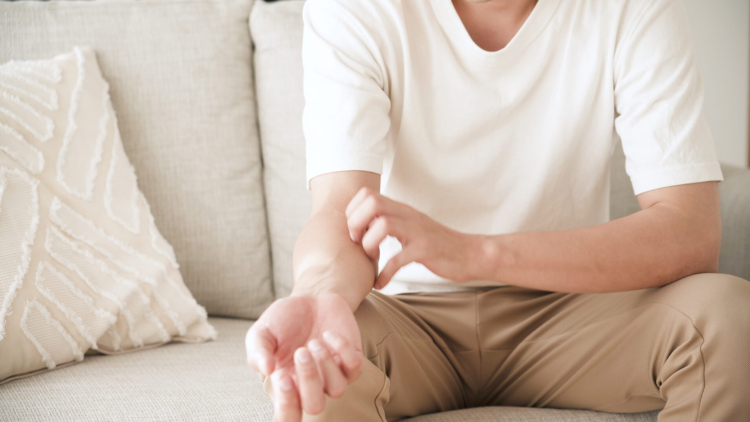Symptoms
Ringworm occurs predominantly on the scalp and the chest and looks like clearly defined small round, red patches. The patches can peel, flake and become whitish or greyish, moist or filled with pus. The hair growing on the affected areas becomes fragile and ends up breaking or falling out. Not to worry though, since in the majority of cases, the hair regrows once the condition has been cleared up. If it occurs on the feet, then it is called athlete’s foot. Intense itching can also occur which can lead to secondary infections caused by scratching.
Causes
Ringworm is caused by a fungus that is invisible to the naked eye which penetrates under the skin via an open sore or by direct or indirect contact with the hair or fur of an infected person or animal. You can catch ringworm by simply sharing a pillow with someone who has it!
Traitements
Contrary to other skin conditions, ringworm can be treated and cured.
According to the infected area, it is possible to use a local or oral treatment. For example, if the scalp is affected, it is preferable to use the oral medication rather than creams or ointments. Only a doctor can prescribe this type of treatment once the diagnosis is confirmed.
In other ringworm cases, it is possible to apply an antifungal cream or lotion on the patches. Don’t hesitate to ask your Accès pharma affiliated pharmacist for advice.
Prevention also plays an important role in preventing the spread of the condition. Here are a few tips:
- Avoid using personal items of an infected person (pillow, brush, comb, elastic, towel, hat, etc.);
- Wash objects that have come in contact with an infected person;
- Regularly visit your pet’s veterinarian to verify that it is not infected;
- Avoid touching affected areas, and wash your hands afterwards if you do.
This information is not a substitute for professional medical advice and Accès pharma affiliated pharmacist-owners cannot be held responsible for this information. The information was true and accurate at the time of publication, but it is subject to change.





